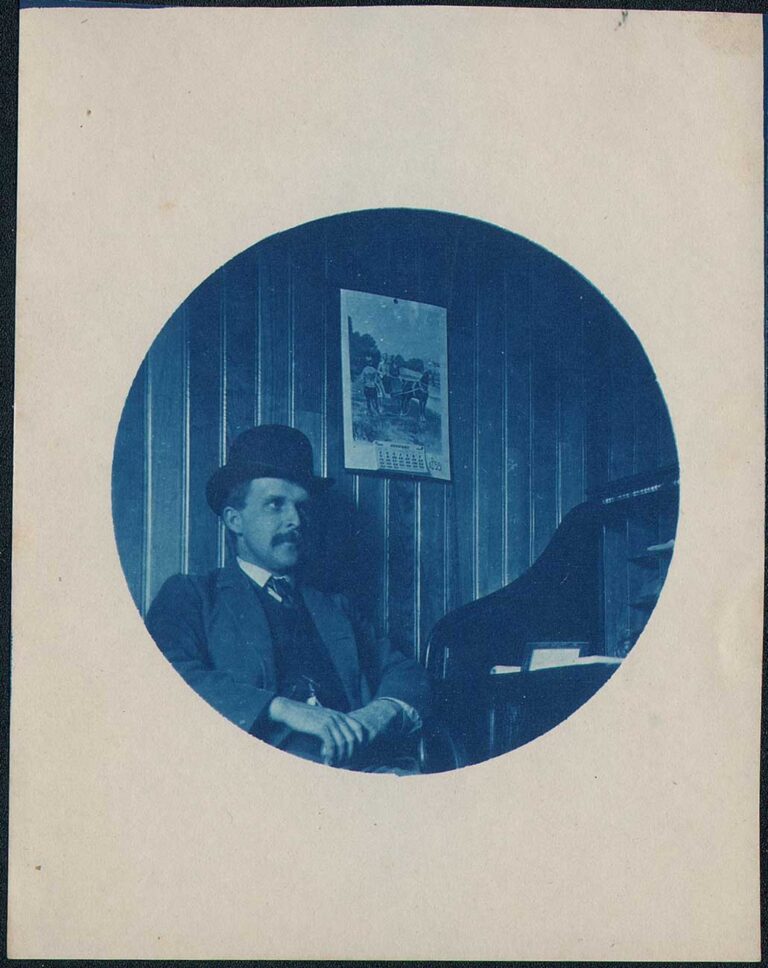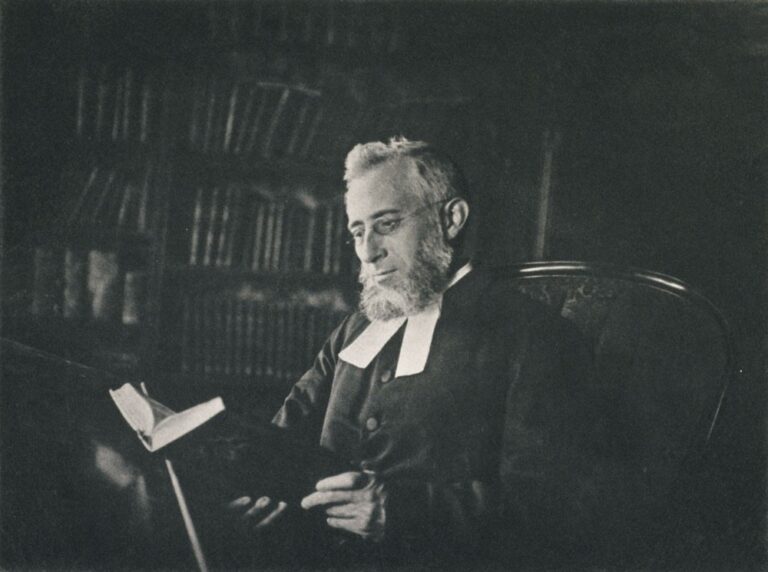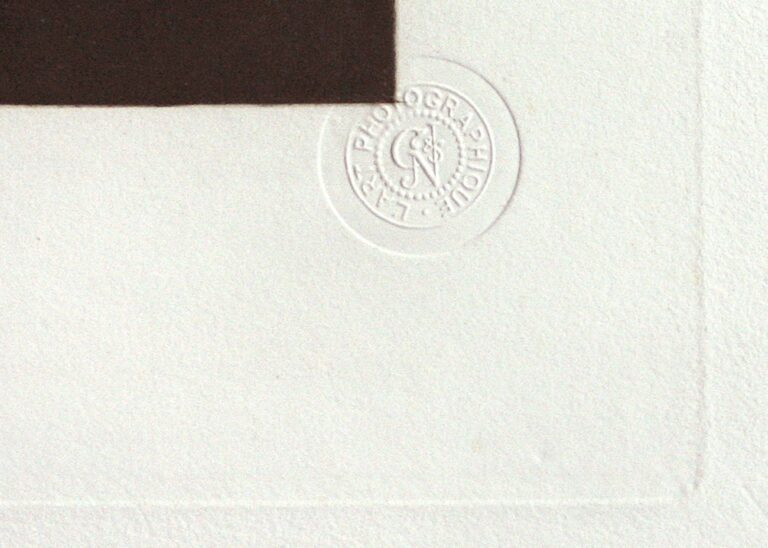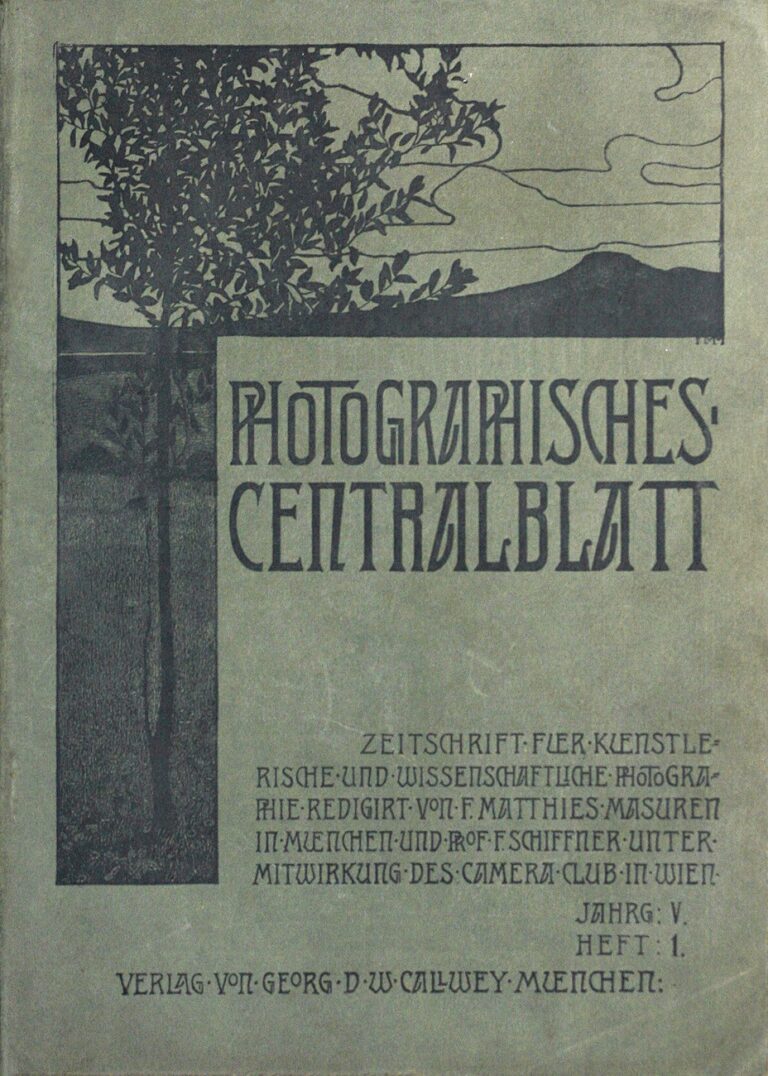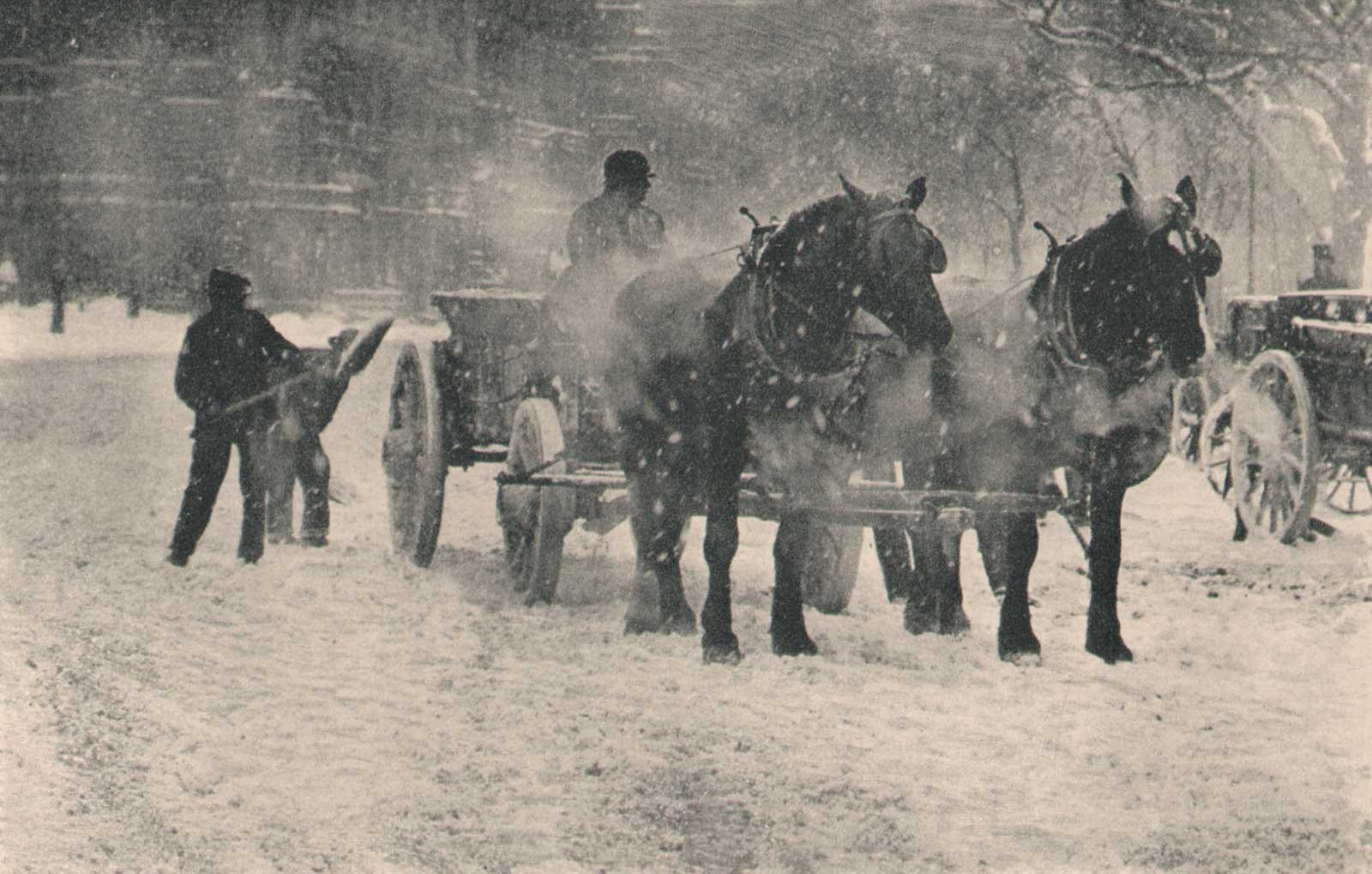
After the Storm
Most likely taken in New York City, this photograph shows two men at left shoveling snow into a double-hitched horse cart. The photograph is a titled variant (we’ve assigned same) included as part of an appreciation of John Beeby’s work published in the December, 1904 issue of The Photo-Miniature. (p. 473)
An engraver by profession, American amateur photographer John E. Beeby was the librarian of the Camera Club of New York in the late 1890’s and into the early 20th Century. His specialty was atmospheric photographs, often showing the active streets of New York City shrouded in fog and rain. In 1898, he designed the club’s bookplate.
The December, 1904 issue of The Photo-Miniature published an appreciation of John Beeby by William Murray along with twelve full-page halftones of his work. The article seems to have been done as a tribute after the amateur photographer had decamped to the west coast of the United States.
An Appreciative Note on John Beeby and his Work
My knowledge of Mr. John Beeby and his work is derived from an intimate acquaintance with his photographic and pictorial efforts from the day, a novice in camera work, he joined the late Society of Amateur Photographers of New York, to the time when, better known in the photographic world, he left its successor, The Camera Club, to change his domicile to the Pacific Coast. It hardly requires any words from the former official critic of the above organizations, to tell the readers of THE PHOTO-MINIATURE about the status of Mr. Beeby in both technical and pictorial photography.
A glance at whatever examples of his work he may offer you for reproduction, will, I am sure, far outweigh any review of them that I might write. Yet it may be proper for me to say, briefly, that Mr. Beeby’s success as a pictorialist is entirely due to his own native ability, diligent self-culture and untiring zeal. It is true that his progress toward perfection in the technical operation of photographic processes was wonderfully helped by his associations with the galaxy of talented men in the membership of The Camera Club of New York, with Stieglitz, Post, Champney, Fraser, Berg, Scott and others; but his rapid rise, as a simple club member, almost hiding his light under a bushel, to the successful amateur, making his light so shine before men that they not only saw his good works but gave prizes for them all over the world, must be ascribed to his natural artistic temperament, to his ready perception of the pictorial possibilities of a scene, combined with a prodigious industry rarely associated with the other qualifications.
Mr. Beeby is, essentially, a practical genius. His profession as an engraver constantly requires him to produce decorative designs, embodying beautiful lines and colors which can be seen by others as well as himself, and it may be readily imagined that when the new school of photography arose, advocating, both by precept and example, suggestion rather than realization, he did not follow it very far. Mr. Beeby’s pictures, therefore, are so expressed that it is not incumbent on the beholder to supply all the poetry necessary for their esthetic enjoyment. If the purpose of art be to edify and elevate the mind through the perceptions and sensibilities, surely this old-fashioned method of showing beautiful things in a beautiful manner is still to be commended.
I am confident that among Mr. Beeby’s selections will be found some examples of snow and fog and rain, under which conditions it is his delight to show the streets of a great commercial city, and to turn with a magic wand the dull prose of its busy life into the poetry and charm of fairy land. I leave your readers to the enjoyment of their pictorial wealth.
WM. M. MURRAY. (pp. 500-01)
